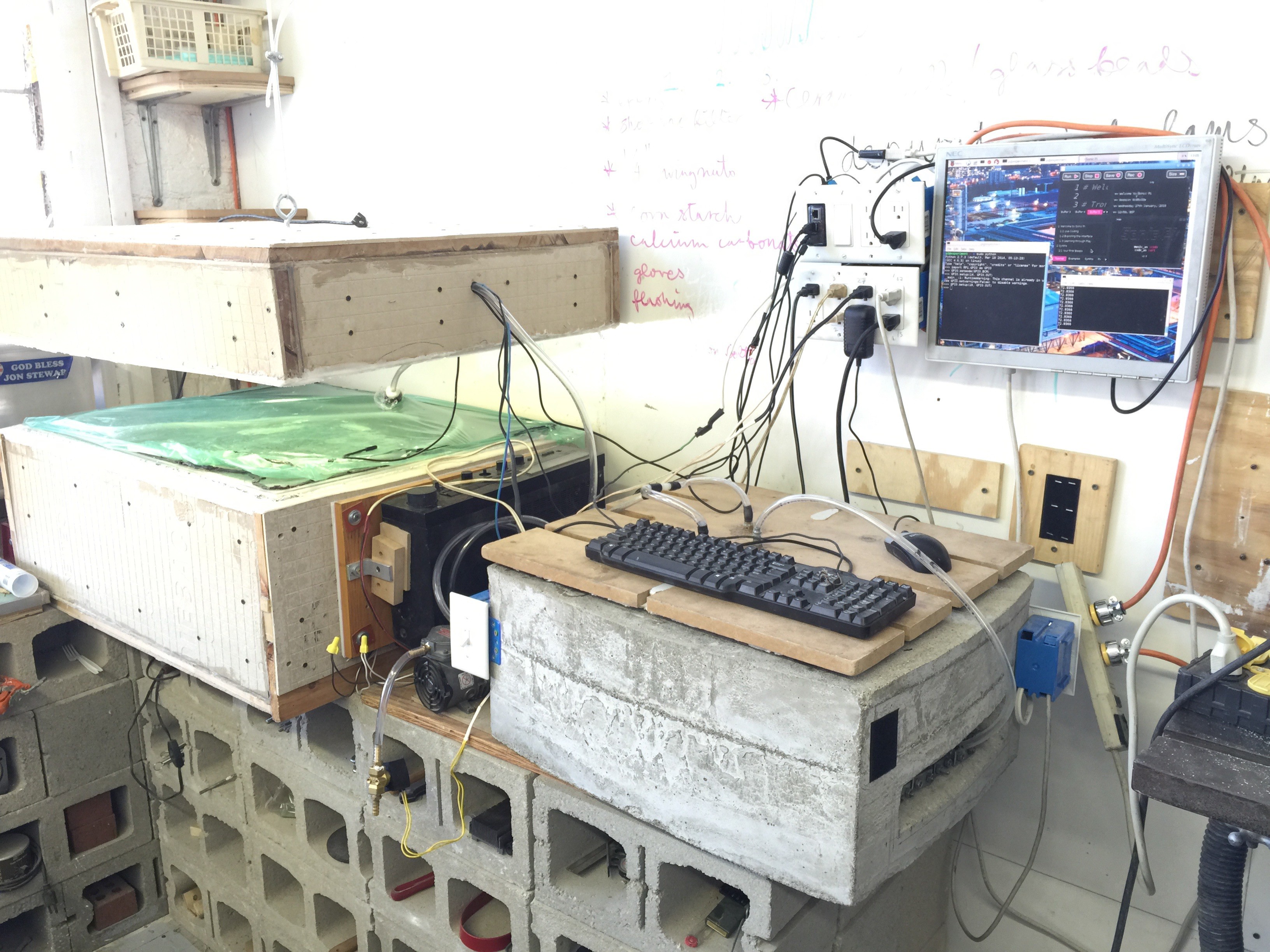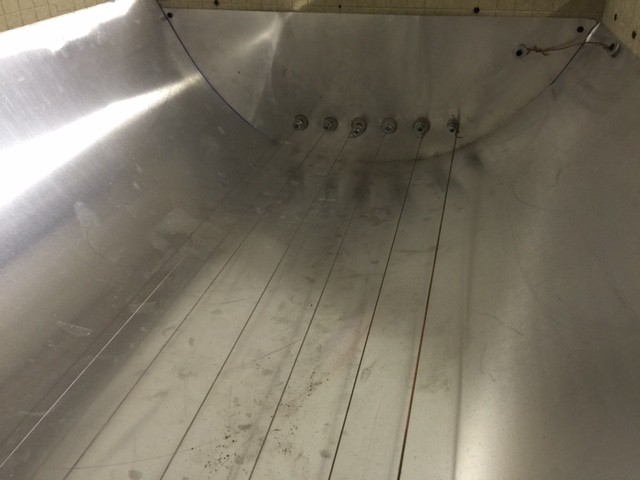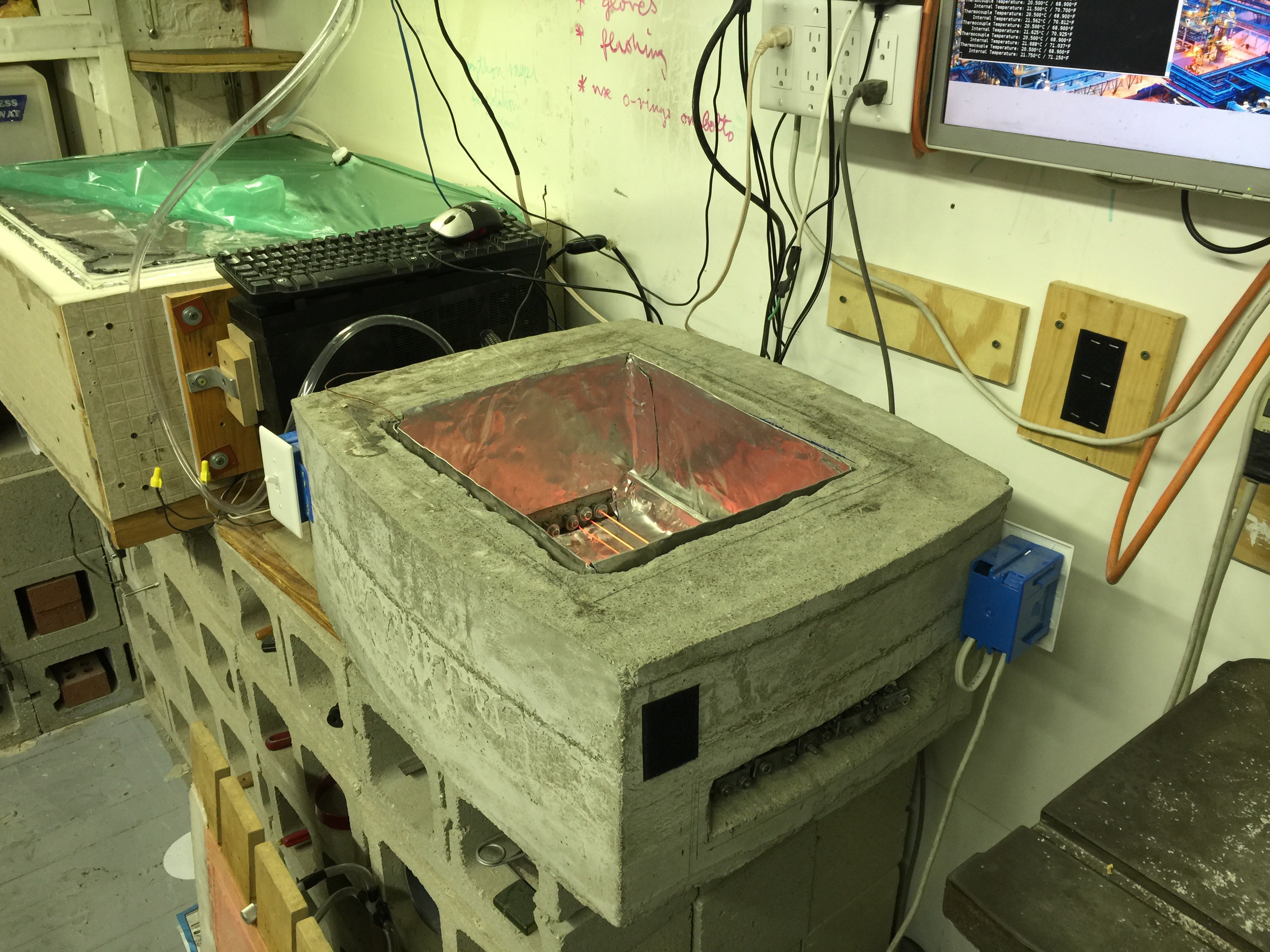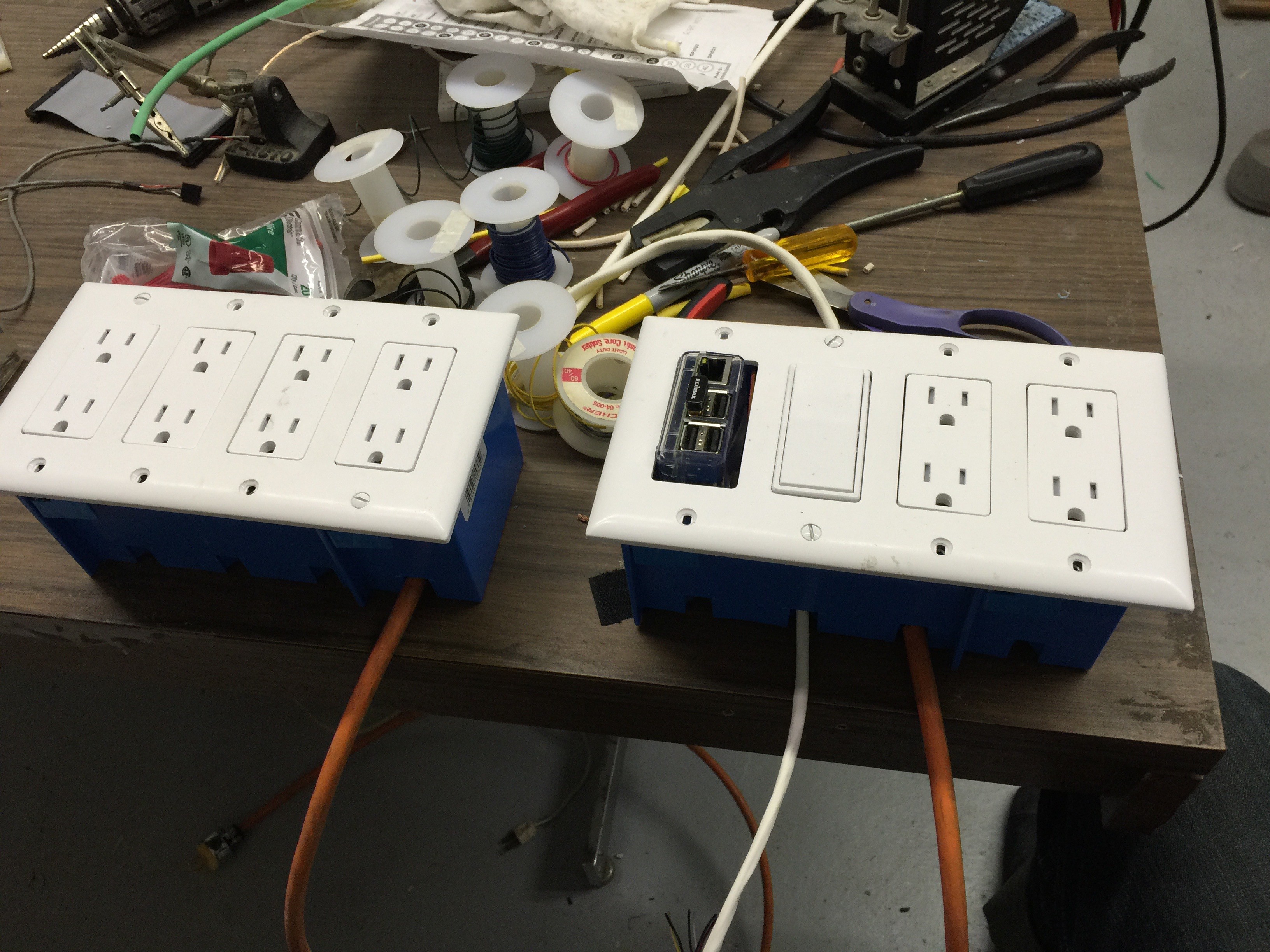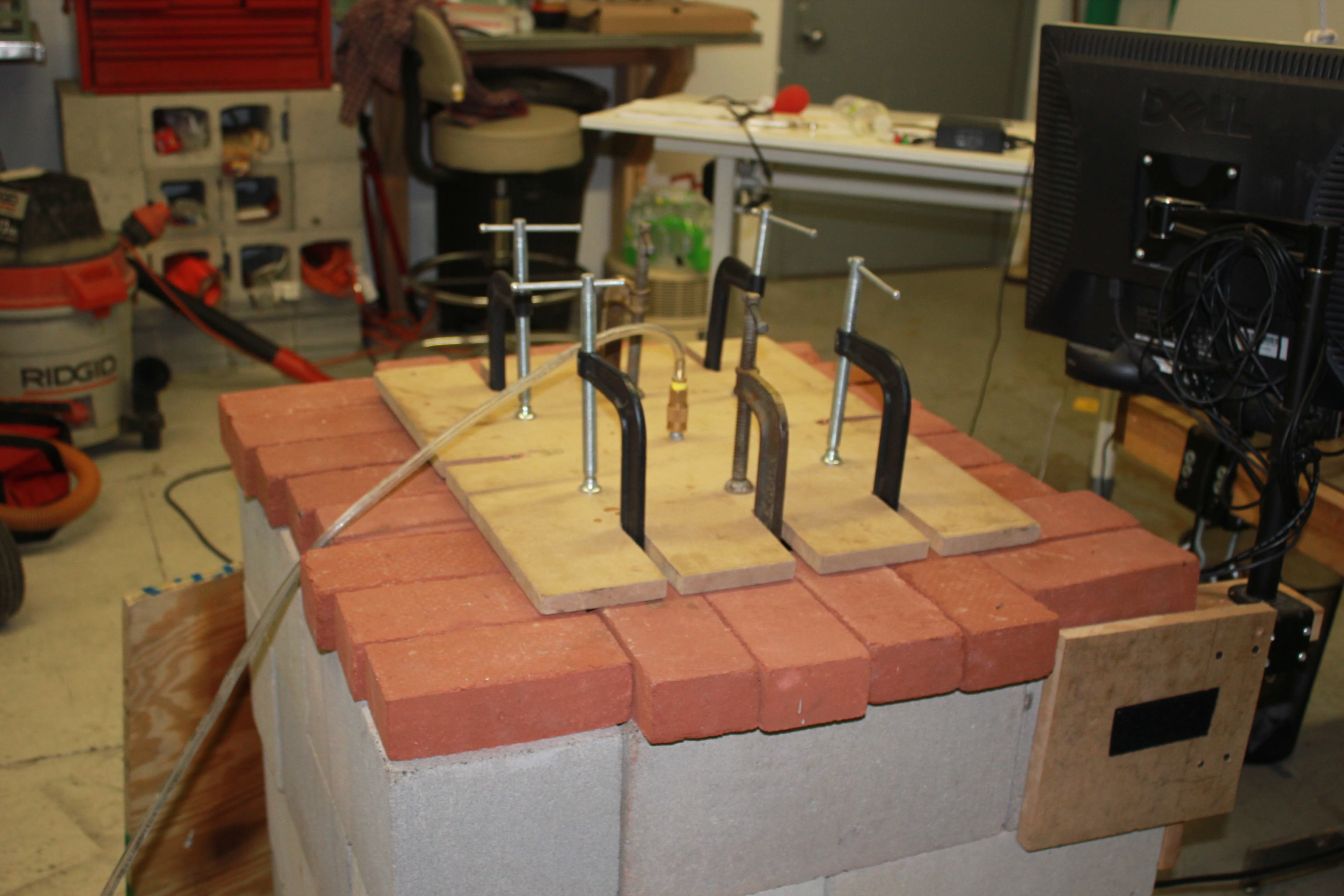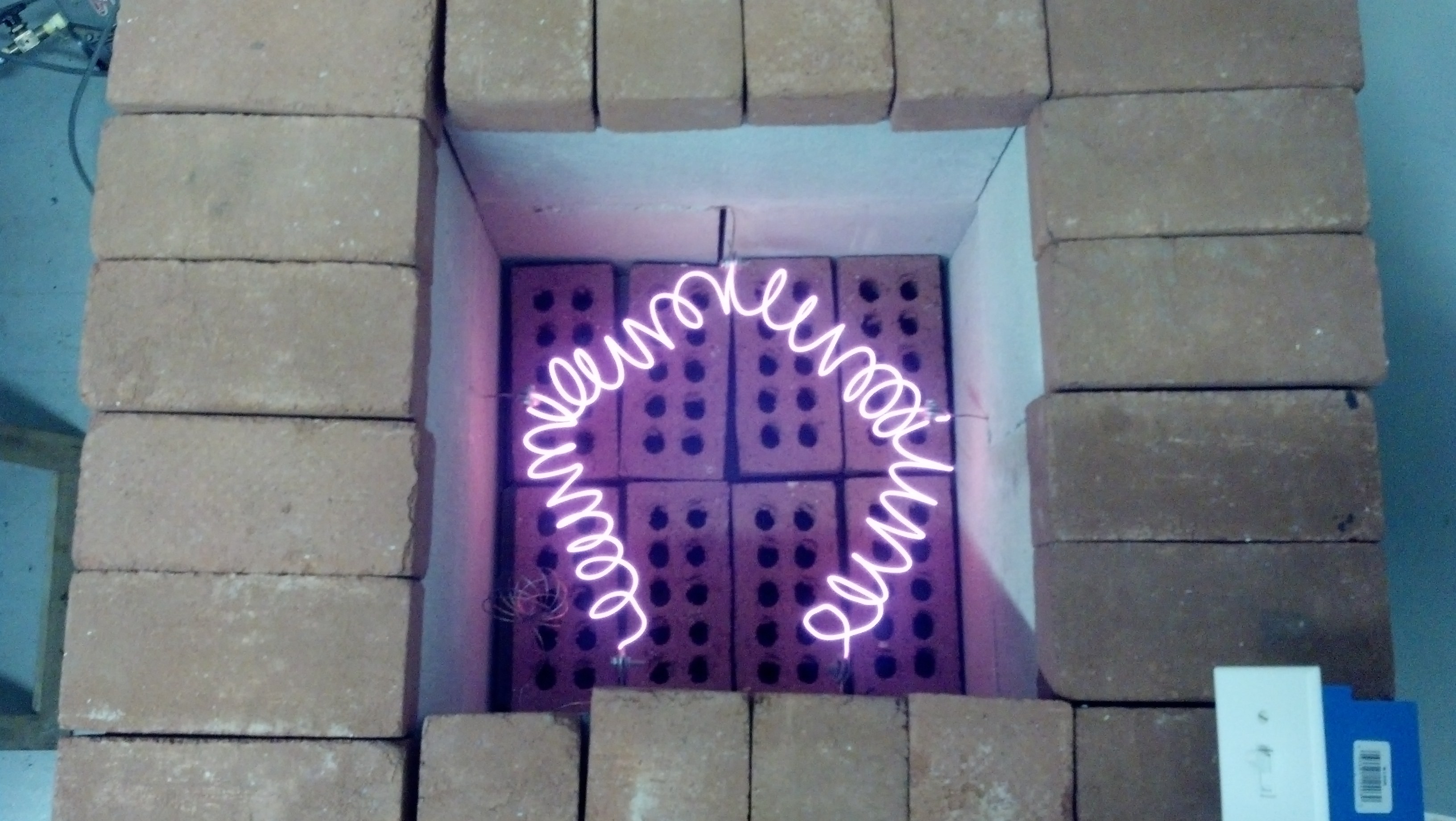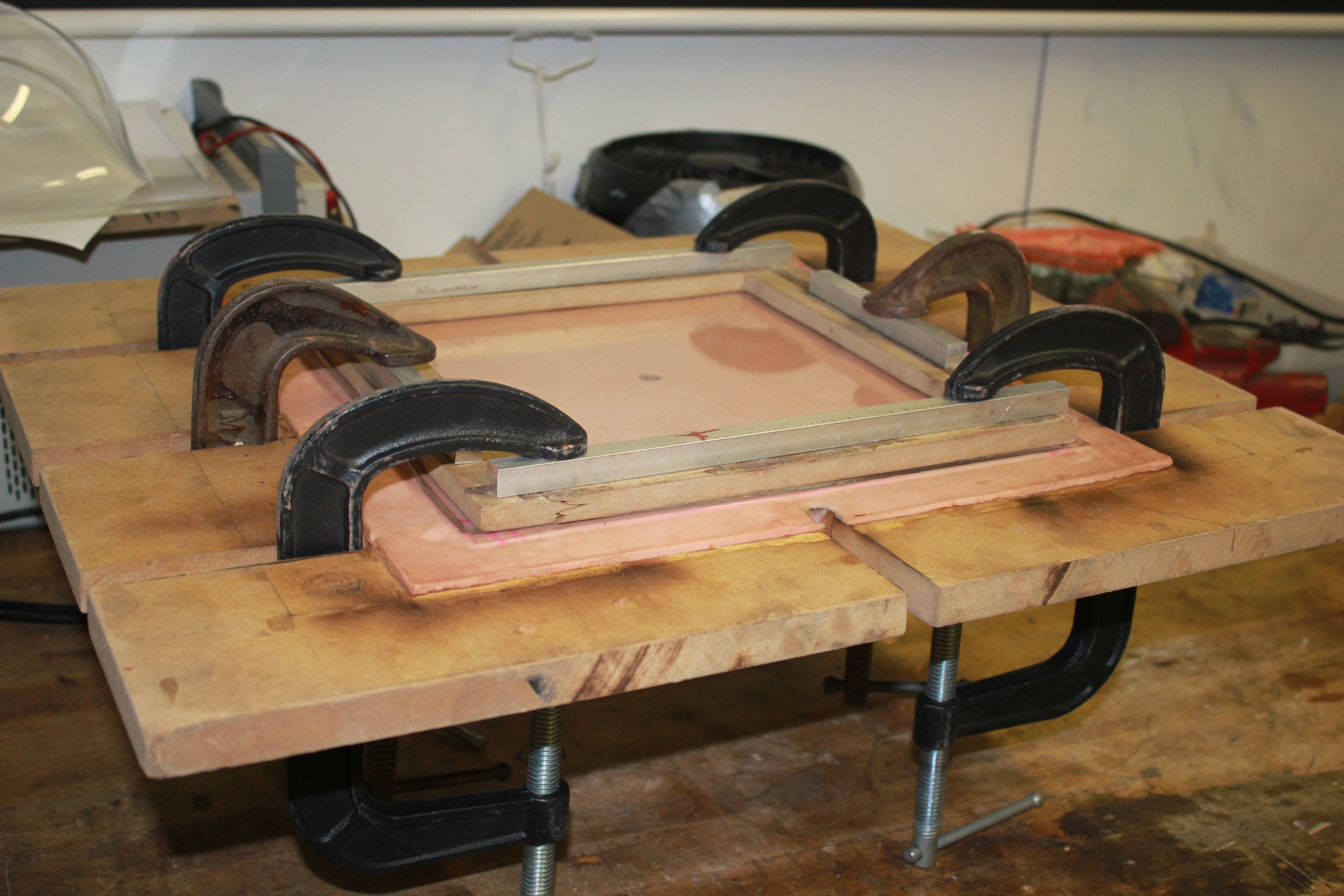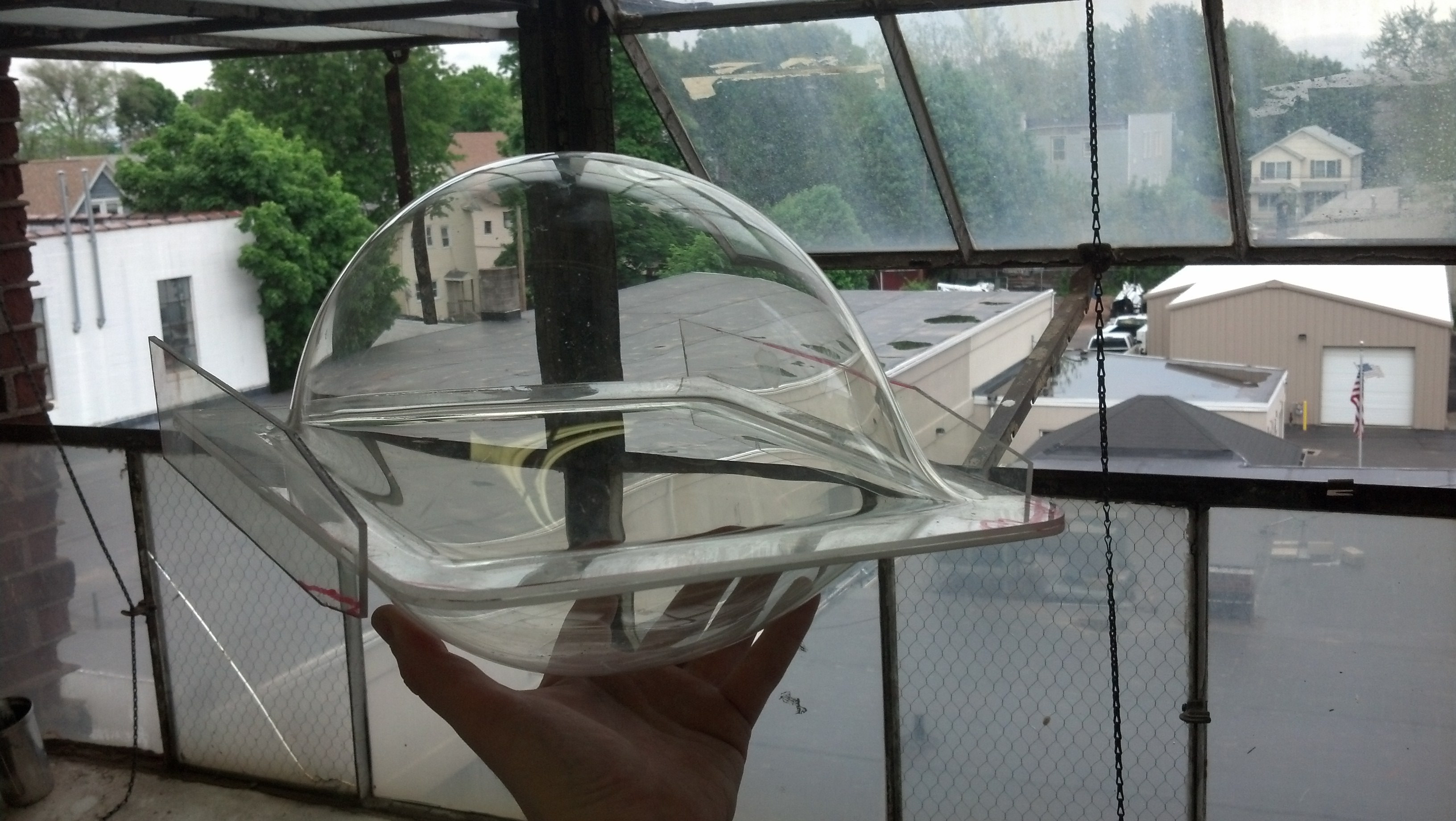-
Article on Making Large Acrylic Bubble Canopies
04/07/2018 at 23:53 • 0 commentsHere's a great article about blow molding from a few years ago:
http://www.autospeed.com/cms/A_113285/article.html

The article takes you through Ian Linke's workshop, where he makes bubble canopies primarily for sailplanes. In addition to free blowing, he uses another technique called stretch molding. If you are interested in learning more about making bubble canopies, it is worth the read.
-
Cheap Source for Acrylic
04/02/2018 at 20:49 • 0 commentsIf you know a framer, you can get most of your acrylic for free. Framers regularly throw out long strips of acrylic when they are making new frames. They also throw out large pieces of acrylic when they are refurbishing old frames. Even if the old acrylic is scratched, it will work well in the oven, because the scratches go away when heated. Almost all of the acrylic that I have was free and would have otherwise ended up in the dumpster—so go make friends with your local framer :)
-
Oogoo Silicone Seals
04/02/2018 at 20:45 • 0 commentsI want to give a shout out to Mikey77. Not only is he doing fantastic work with 3D printing and kinetic art, he also created the Oogoo instructable. Oogoo is his substitute for Sugru that uses Silicone Caulk I from the hardware store, and cornstarch. It works exceedingly well for making small silicone parts and seals. It is not high temperature silicone, but it works well enough for low temperature applications like the seals for this oven.
-
Future Ovens
03/31/2018 at 02:26 • 0 commentsFor future ovens, I’d like to automate the process more, so that I can be in the studio focusing on other work while the plastic is being blown. The main modification would be to separate the functions of the lid. I would like to build a separate pressure chamber for blowing the plastic sheet that I put inside of the oven, instead of having the lid do that.
The main goal would be to make the plastic easier to load and unload. I would probably want to use threaded rod instead of clamps, and use a drill/driver to tighten and loosen it. Alternatively, I could use large springs and latches to secure the plastic.
I’d also like to build the oven out of metal and make it more versatile and larger. I would base my new oven off of this one used for powder-coating. It uses steel sheet, steel studs and rivets to build the body of the oven.
One big benefit of making a more automated oven, would be to improve the annealing process, so it can run overnight.
-
Subsequent Ovens
03/31/2018 at 02:22 • 0 comments
The next few ovens that I built were a little more advanced. I experimented with using cement board and casting concrete for the body of the ovens.
I added reflectors made out of aluminum flashing, so that the heat was directed up to the plastic (and not into the oven walls). This made the process much faster and wasted less heat.

I also changed how I made the heating elements out of Kanthal. Instead of coiling the wire, I used straight strips that were connected to threaded rod and suspended on springs. This meant that when the Kanthal heated up, it would not sag and touch the reflector (which I connected to ground as a precaution).

I also added a Raspberry Pi with a thermocouple and webcam, and connected the heating elements, the air compressor and a solenoid valve up to a bank of relays. This enabled me to operate the oven from the keyboard. My intention was to use OpenCV and the webcam to blow the bubble automatically, but I did not complete that. I realized that it did not make sense to automate that part of the process before I developed a better way to load and unload the plastic.
-
First Propane and Electric CMU Ovens
03/31/2018 at 02:08 • 0 comments
I built my first ovens out of CMUs (cinder blocks). I already had a bunch of CMUs in my studio, and they had the advantage that they could be rearranged to change the shape of the oven, or taken apart and used in different projects when I was done. The disadvantage of using CMUs is that they suck up a lot of heat, and make the oven slow to heat up and slow to cool down.

Inside the CMUs, I put a propane burner as the heat source. This was not the ideal heat source, but I already had one from a previous project, and it was easy to use. The main problem with the propane burner was that it could not be run while the plastic was in the oven. The combusted gas would cause uneven heating and bubbling on the surface of the plastic sheet. I mitigated that problem by using the propane indirectly. I put a flat cast iron pan over the burner and made a layer of extruded bricks to retain heat. In order to heat the plastic, I would first use the propane burner to heat up the bricks, then turn off the propane, load the plastic into the oven and use the bricks to heat the plastic.

The propane burner worked reasonably well. I was able to build the oven and get started blowing bubbles in a weekend, but using propane was not ideal. I replaced the propane burner with Kanthal wire, which meant that I could run the heat while the plastic was in the oven. I used nuts and bolts to make the connections for the Kanthal wire inside the oven. I coiled the Kanthal and supported it with a few pieces of isolated copper wire, stuck into the cracks of the CMUs. I connected the ends of the Kanthal to Romex, which then went outside of the oven to a junction box with a power switch. I measured the resistance of the Kanthal heating element to make sure that it would not draw more than 10A while on mains voltage.

The plastic sheets were loaded into the oven by clamping them to a lid made out of MDF. I was able to use MDF because the temperature had to stay below 320F, the temperature that acrylic melts. I drilled a hole in the lid and put an air fitting on it. On the underside of the lid, I poured a pad of silicone to create a seal for the plastic. I made a solid pad, instead of a seal around the edges, so that I could use different sized apertures. I used leftover two-part silicone that I had from another project making molds, but another option was to Oogoo made from silicone caulk and cornstarch. An Oogoo seal would probably deteriorate faster than two-part silicone, but the lid is cheap and can easily be repaired or replaced. The plastic sheet was clamped to the lid with an aperture, and aluminum rod, to spread out the force of the clamps. The aperture was cut from MDF into the shape that I wanted to blow the bubble.

After the plastic was loaded into the oven, I used an IR surface thermometer to measure its temperature. I rotated the lid periodically to make sure that the plastic heated evenly. Once the temperature was around 270-300F, I would hook up the air compressor and begin blowing the bubble. I was able to reliably get good bubbles that were half as high as the aperture was wide. That meant that for a 12” x 12” aperture, I could get a good 6” bubble. Bubbles could be blown bigger, but the bigger they got, the more care they needed to make sure they did not pop or get too quirky.

 Michael Barton-Sweeney
Michael Barton-Sweeney
